You can perform the triceps extension in several positions, such as standing, sitting, flat, or on an incline. You can also work one arm at a time or both arms together. However, seated triceps extensions are better because they use strict foam.
This version is a safer alternative if you’ve ever felt the strain in your lower back during overhead triceps movements. Because you’re seated, there’s less pressure on your lower back compared to standing exercises. When I do it with a heavy dumbbell, I usually do it in the sitting position.
The seated tricep extension, also known as the seated overhead tricep extension, is an isolation exercise that works the triceps.
It is particularly useful in targeting the long head of the triceps muscle. A larger and denser long head will give you the overall appearance of a larger tricep.
There are many variations of seated tricep extensions that you can do with dumbbells, barbells, and cable, each with its own unique benefits.
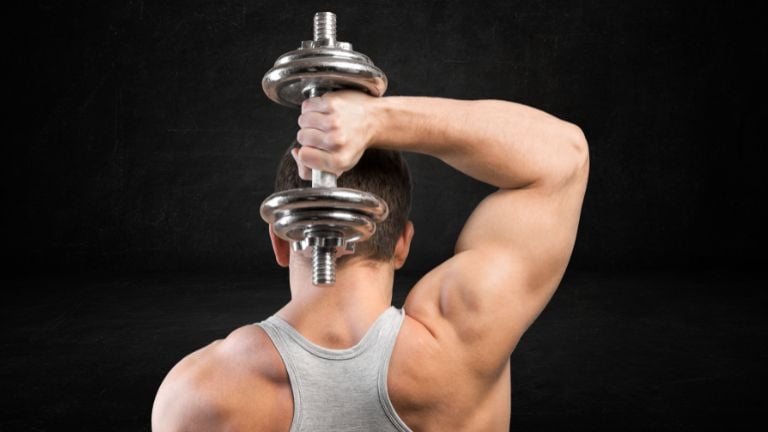
Seated Tricep Extension Muscles Worked
- The primary muscle group that worked during the tricep extension was your triceps.
- Various secondary muscle groups activate during it: biceps, forearms, lats, abs, obliques, pecs, and trapezius.
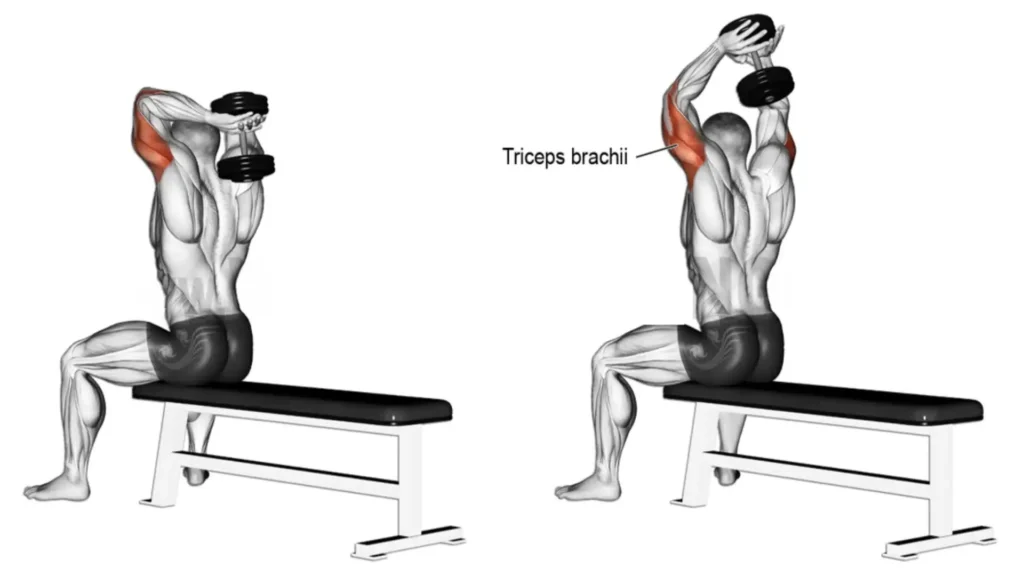
How To Do Seated Overhead Tricep Extension
- You should choose a flat bench and position it away from any obstructions. Ensure it’s stable.
- Sit down with your feet flat on the ground, hip-width apart. Your back should be straight, and your shoulder blades should be pulled slightly back and down.
- Depending on your preference, you can use a dumbbell or an E-Z bar. Let’s start with a dumbbell.
- Once you have a firm grip, extend your arms and hold the dumbbell above your head.
- With the dumbbell held securely overhead, keep your arms slightly bent. This is your starting position.
- Ensure your chin is normal, your eyes forward, and your neck is neutral.
- Slowly bend your elbows, allowing the dumbbell to lower behind your head. Your elbows should be the only moving part.
- Lower the dumbbell until your forearms are slightly past parallel to the floor or until you feel a good stretch in your triceps.
- Push the dumbbell back to the starting position by straightening your elbows.
Tips and Form
- Keep your elbows pointed forward and close to your head. It can help to imagine holding a basketball between your elbows – don’t let it drop.
- Maintain a controlled motion throughout, effortlessly lowering and raising the weight. Lifting lighter weights with proper form is better than lifting heavier weights with poor technique.
- Keep your upper arms as still as possible, allowing your forearms to drive the movement.
- Maintain a neutral head and neck position. Keep your eyes forward, and don’t look up or down at the weight.
- Lower the weight until your forearms are slightly beyond parallel to the floor or until you feel a good stretch in the triceps.
- Engage your core muscles throughout the exercise. This will provide stability to your upper body and protect your spine.
- Emphasize the eccentric (lowering) phase by lowering the weight for 2–3 seconds. This increases muscle tension and can lead to better strength and muscle gains. A study found that both exercises activate the tricep muscles similarly during both the raising (concentric) and lowering (eccentric) phases.
Best Variations of Seated Tricep Extension
The seated dumbbell tricep extension exercises offer an effective way to train the triceps; let’s examine other variations of them.
1. One-Arm Seated Dumbbell Triceps Extension
Our dominant arm usually takes over when we use both arms, creating muscle imbalances. The one-arm variation helps correct any strength differences and allows the weaker side to catch up.
Doing it with your arm gives you more freedom of movement, allowing for a deeper stretch at the bottom of the movement and a full contraction at the top. This increased range of motion enhances muscle activation and helps you get the most out of each rep.
Lastly, this exercise is great for building that mind-muscle connection.
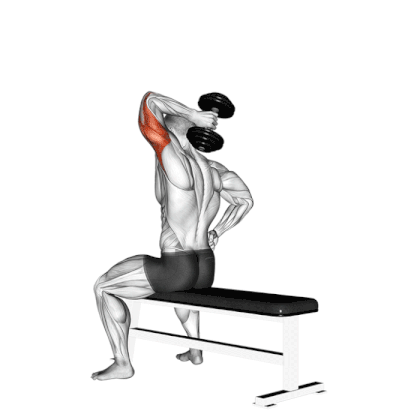
2. Seated Barbell Tricep Extension
One of the standout benefits of the seated barbell tricep extension is that it allows you to load more weight than dumbbell variations. With both hands gripping the barbell, your triceps are better equipped to handle a heavier load.
Because you can handle more weight, this exercise is perfect for achieving progressive overload.
The exercise can be performed with an EZ bar, which allows for a greater range of motion and a more neutral grip.
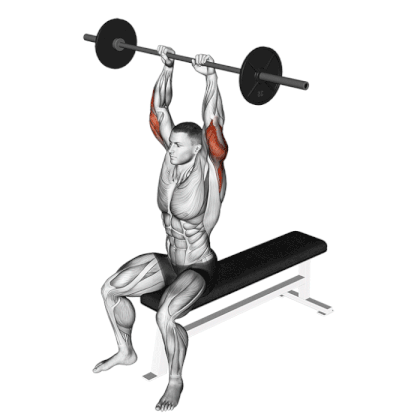
3. Two Arm Dumbbell Extension
When you hold a dumbbell in both hands, both arms will work independently. This prevents your more muscular arm from compensating for your weaker side.
With dumbbells, your wrists and elbows can find their natural path instead of being locked into a fixed position. This can make the exercise more comfortable.
When performing the seated two-arm overhead dumbbell triceps extension, keep your elbows close to your head. This will emphasize your triceps brachii.
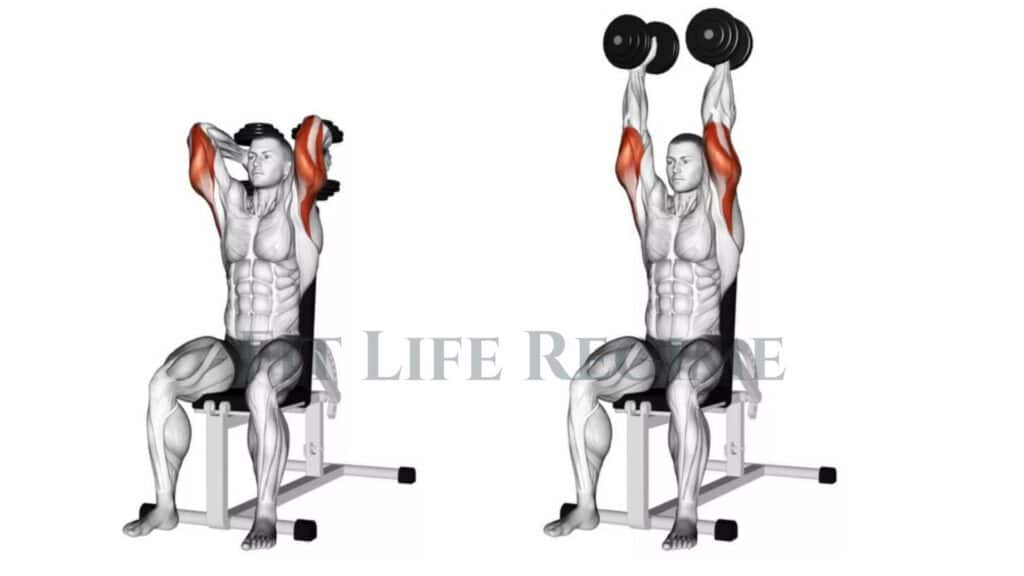

Manish is a NASM-certified fitness and nutrition coach with over 10 years of experience in weight lifting and fat loss fitness coaching. He specializes in gym-based training and has a lot of knowledge about exercise, lifting technique, biomechanics, and more.
Through “Fit Life Regime,” he generously shares the insights he’s gained over a decade in the field. His goal is to equip others with the knowledge to start their own fitness journey.
